|
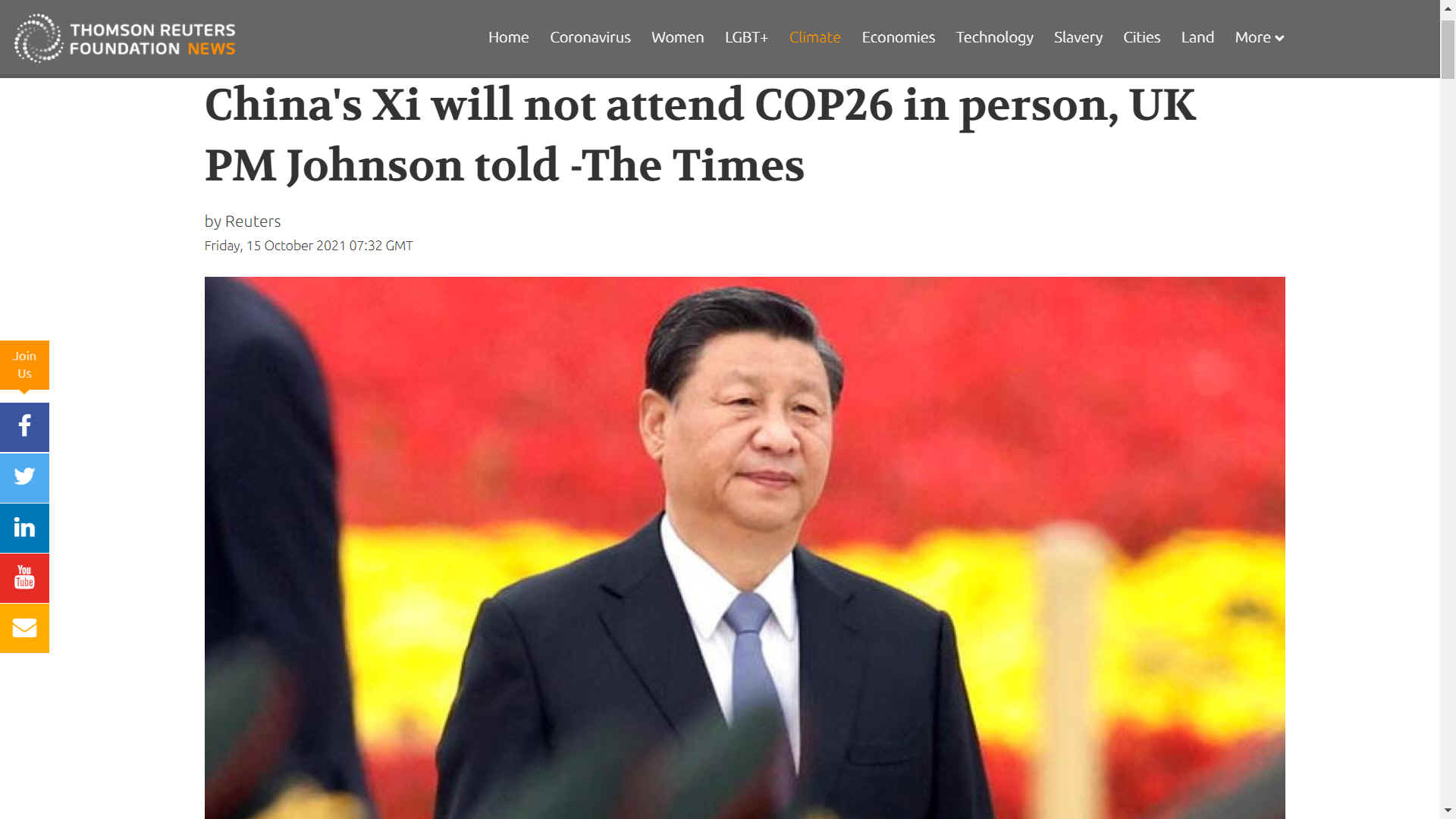
COAL
POWERED CHEAP
IMPORTS -
It's no longer a bowl of rice a day in China, they want
western luxury, executive cars instead of cycles and
rickshaws
- and worst of all - military might. We agree that poorer
members of society should be able to aspire to a comfortable
lifestyle, benefiting from food and energy security as per the
UN's SDGs.
We don't agree with military aspirations or the continued
burning of coal and oil to finance such revolution.
It
should be remembered that in killing humans in other
countries, Xi is also killing his own countrymen. No wonder
then that his satisfaction rating is at a significant low.
Time for an election perhaps! Except that China's human rights
record suppresses public opinion.
Set against this
developing scenario, why are so many big players having goods
Made in China? Imports are not cheap if you are pushing out
masses of CO2 into the atmosphere, because of the cost to our
environment. Goods from China that can be certified made using
renewable electricity, and zero emission transport - now
that's a whole new ballgame. Xi Jinping will not attend COP26,
where he will be told off by Greta
Thunberg for sure, and shunned by the media.
At
the UN General Assembly 2021, Xi Jinping announced that China “will not build new coal-fired power projects abroad”.
Three days after Xi’s speech, the Bank of China declared it would no longer provide financing for new
coal mining and power projects outside China from the last quarter of 2021.
This pledge from the world’s largest public financier of overseas coal plants could usher in a new era of low-carbon development. But that depends on what happens in the countries where China had
funneled money into coal power. Many of these places urgently need new energy infrastructure. Will China’s investments here be redirected to
renewable energy – or simply disappear?
According
to a study by Exeter University 9th September 2022, we are
close to passing 'Tipping
Points' if global warming continues at the present rate.
Climate
Change is linked to air pollution from greenhouse gases. A large share of air pollution is caused by combustion of fossil fuels such as coal and
oil that is linked to lung cancer, among other ailments that
cost our health services a fortune in treatment.
It
stands to reason that the reduction of these fuels can reduce air pollution
drastically - and climate change. Most effective in any
reduction strategy, is the switch to clean power sources such as wind power, solar power, hydro power which don't cause air pollution. Efforts to reduce pollution from mobile sources includes expanding regulation to new sources (such as cruise and transport ships, farm equipment, and small gas-powered equipment such as string trimmers, chainsaws, and snowmobiles), increased fuel efficiency (such as through the use of hybrid vehicles), conversion to cleaner fuels, and conversion to electric vehicles.
A very effective means to reduce air pollution is the transition to
renewable energy. According to a study published in Energy and Environmental Science in 2015 the switch to 100% renewable energy in the United States would eliminate about 62,000 premature mortalities per year and about 42,000 in 2050, if no biomass were used. This would save about $600 billion in health costs a year due to reduced air pollution in 2050, or about 3.6% of the 2014 U.S. gross domestic product. Air quality improvement is a near-term benefit among the many societal benefits from climate change mitigation.
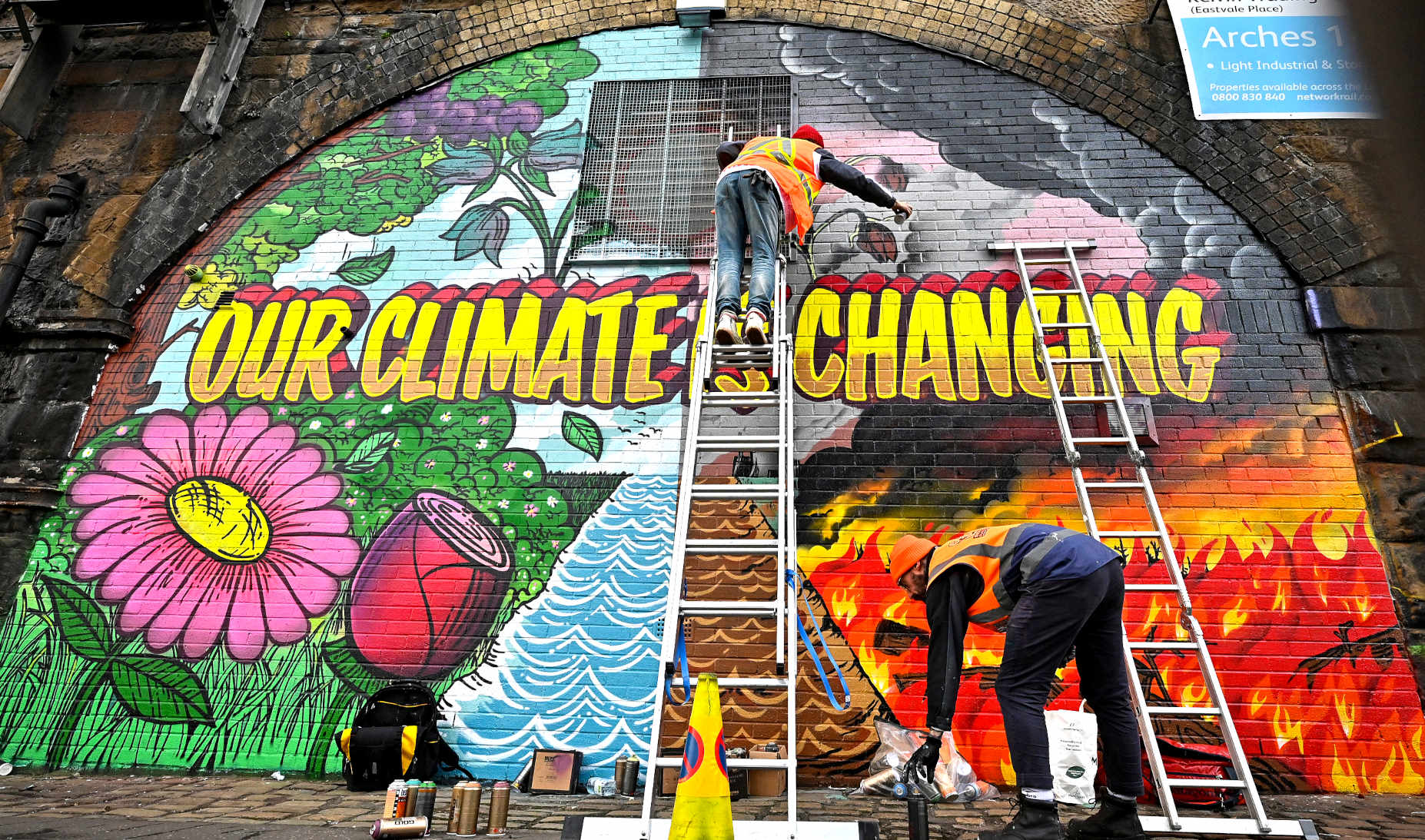
CLIMATE
INACTION SUMMIT -
Human activities are releasing nearly 10 Gegatons of Carbon (about 36 Billion tons of CO2) into the atmosphere every year, driving atmospheric CO2 concentrations to 400 parts per million
(ppm) from their original pre-industrial levels of 280 ppm. This increase in CO2 and other
greenhouse gases concentrations traps additional energy in the earth's climate system. What happens to this "extra" energy (0.5-1 watt/m2) remains a mystery to many outside the field of climate and sciences.
Climate change occurs when changes in Earth's climate system result in new weather patterns that last for at least a few decades, and maybe for millions of years. The climate system is comprised of five interacting parts, the atmosphere
(air), hydrosphere (water), cryosphere (ice and permafrost), biosphere (living things), and lithosphere (earth's crust and upper mantle).
The climate system receives nearly all of its energy from
the sun, with a relatively tiny amount from earth's interior. The climate system also gives off energy to outer space. The balance of incoming and outgoing energy, and the passage of the
energy through the climate system, determines Earth's energy budget.
THE GUARDIAN 21 JULY 2022 - REVEALED: OIL SECTORS STAGGERING $3bn A DAY PROFITS FOR LAST 50 YEARS
The oil and gas industry has delivered $2.8bn a day in pure profit for the last 50 years, a new analysis has revealed.
The vast total captured by petrostates and fossil fuel companies since 1970 is $52tn, providing the power to “buy every politician, every system” and delay action on the climate crisis, says Prof Aviel
Verbruggen, the author of the analysis. The huge profits were inflated by cartels of countries artificially restricting supply.
The analysis, based on World Bank data, assesses the “rent” secured by global oil and gas sales, which is the economic term for the unearned profit produced after the total cost of production has been deducted.
The study has yet to be published in an academic journal but three experts at University College London, the London School of Economics and the thinktank Carbon Tracker confirmed the analysis as accurate, with one calling the total a “staggering number”. It appears to be the first long-term assessment of the sector’s total profits, with oil rents providing 86% of the total.
Emissions from the burning of fossil fuels have driven the climate crisis and contributed to worsening extreme weather, including the current heatwaves hitting the UK and many other Northern hemisphere countries. Oil companies have known for decades that carbon emissions were dangerously heating the planet.
“I was really surprised by such high numbers – they are enormous,” said
Verbruggen, an energy and environmental economist at the University of Antwerp, Belgium, and a former lead author of an Intergovernmental Panel on Climate Change report.
“It’s a huge amount of money,” he said. “You can buy every politician, every system with all this money, and I think this happened. It protects [producers] from political interference that may limit their activities.”
The rents captured by exploiting the natural resources are unearned, Verbruggen said: “It’s real, pure profit. They captured 1% of all the wealth in the world without doing anything for it.” The average annual profit from 1970-2020 was $1tn but he said he expected this to be twice as high in 2022.
The profit-grabbing is holding back the world’s action on the climate emergency, he said: “It’s really stripping money from the alternatives. In every country, people have so much difficulty just to pay the gas and electricity bills and oil [petrol] bill, that we don’t have money left over to invest in renewables.”
Some of the rents go to governments as royalties, says Prof Paul
Ekins, at University College London: “But the fact remains that, over the last 50 years, companies have made a huge amount of money by producing fossil fuels, the burning of which is the major cause of climate change. This is already causing untold misery round the world and is a major threat to future human
civilisation.
“At the very least these companies should be investing a far greater share of their profits in moving to low-carbon energy than is currently the case. Until they do so their claims of being part of the low-carbon energy transition are among the most egregious examples of
greenwashing.”
Mark Campanale, at Carbon Tracker, said: “Not only is the scale of these rents eye-watering, but it is salient to note that, in the midst of a cost of living crisis caused by record oil and gas prices, this flow of money to a relatively small number of petrostates and energy companies is set to double this year. Shifting to a carbon-neutral energy system based on renewables is the only way to end this madness.”
The Guardian revealed in May that the world’s biggest fossil fuel firms are planning scores of “carbon bomb” oil and gas projects that would drive the climate past internationally agreed temperature limits with catastrophic global impacts. The fossil fuel industry also benefits from subsidies of $16bn a day, according to the
International Monetary
Fund.
Verbruggen’s analysis used the World Bank’s oil rent and gas rent data, which the bank compiles country-by-country and is expressed as percentage of global GDP. He then multiplied this by the World Bank’s global GDP data and adjusted for inflation to put all the figures in 2020 US dollars.
Verbruggen said oil-rich nations, such as Russia and those in the OPEC cartel, including Saudi Arabia, kept rents high by restricting supply: “They change the fundamentals of the markets.” Military action, such as the US-led invasion of Iraq in 2003, and political action, such as the embargo on oil exports from Iran, had also increased the rents, he said. If all available oil and gas could be freely supplied to the market, the price of conventional oil would be $20-30 a barrel, Verbruggen said, compared with about $100 today.
There is far more oil, gas and coal in existing reserves than can be burned if the world is to limit global heating to 1.5C, the target agreed by nations in the Paris climate agreement in 2015. Campanale said: “To keep to 1.5C, this means [international oil companies alone] forgoing around $100 trillion of potential revenues. You can see why oil oligarchs and nations controlled by political elites want to keep their fossil fuel rents, the source of their power.”
May Boeve, the head of campaign group 350.org, said: “These profits have enabled the fossil fuel industry to combat all efforts to switch our energy systems. We have to dismantle such rent-seeking systems and build our future based on accessible and distributed renewable energy that is more sustainable and democratic in every way.”
When the incoming energy is greater than the outgoing energy, earth's energy budget is positive and the climate system is warming. If more energy goes out, the energy budget is negative and earth experiences cooling.
Oh joy. How do we arrange for that?
The
hardest thing to do when thinking of ways to combat climate change: is change.
It does not help that large corporations employ professional Climate
Deniers, to give them ammunition to be able to keep
trading fossil fuels, despite
the cost of human lives and Human Rights violations. But this is a lie, and those companies
and executives employing such tactics are nothing less than Climate
Criminals, turning our world into a giant extermination gas
chamber. In such analysis, coal and oil pollutants are the
equivalent of Zyklon
B.
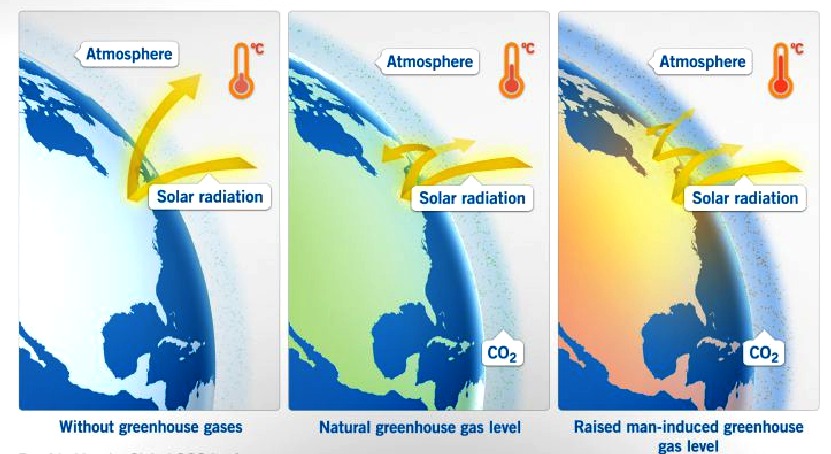
TOO
MUCH CO2
Carbon
dioxide (CO2) is essential to life on Earth but too much
is the atmosphere is a bad thing where greenhouse
gases prevent the sun’s heat from escaping back into space, keeping the Earth warmer
than is comfortable for plants and animals to survive - hence
changing our climate.
CO2 naturally moves into and out of the atmosphere. For example, plants take up and use CO2 to produce energy, and animals breathe out CO2 made from using energy. The greatly increased amount of CO2 in the atmosphere resulting from
human invention and
industrialization, is causing the Earth’s temperature to rise rapidly.
The IPCC’s Special Report of 1.5 Degrees (October 2018),reinforced the fact that a 1.5 degree world cannot be reached without deployment of all clean technologies.
This is one of the major challenges
facing mankind at this time.
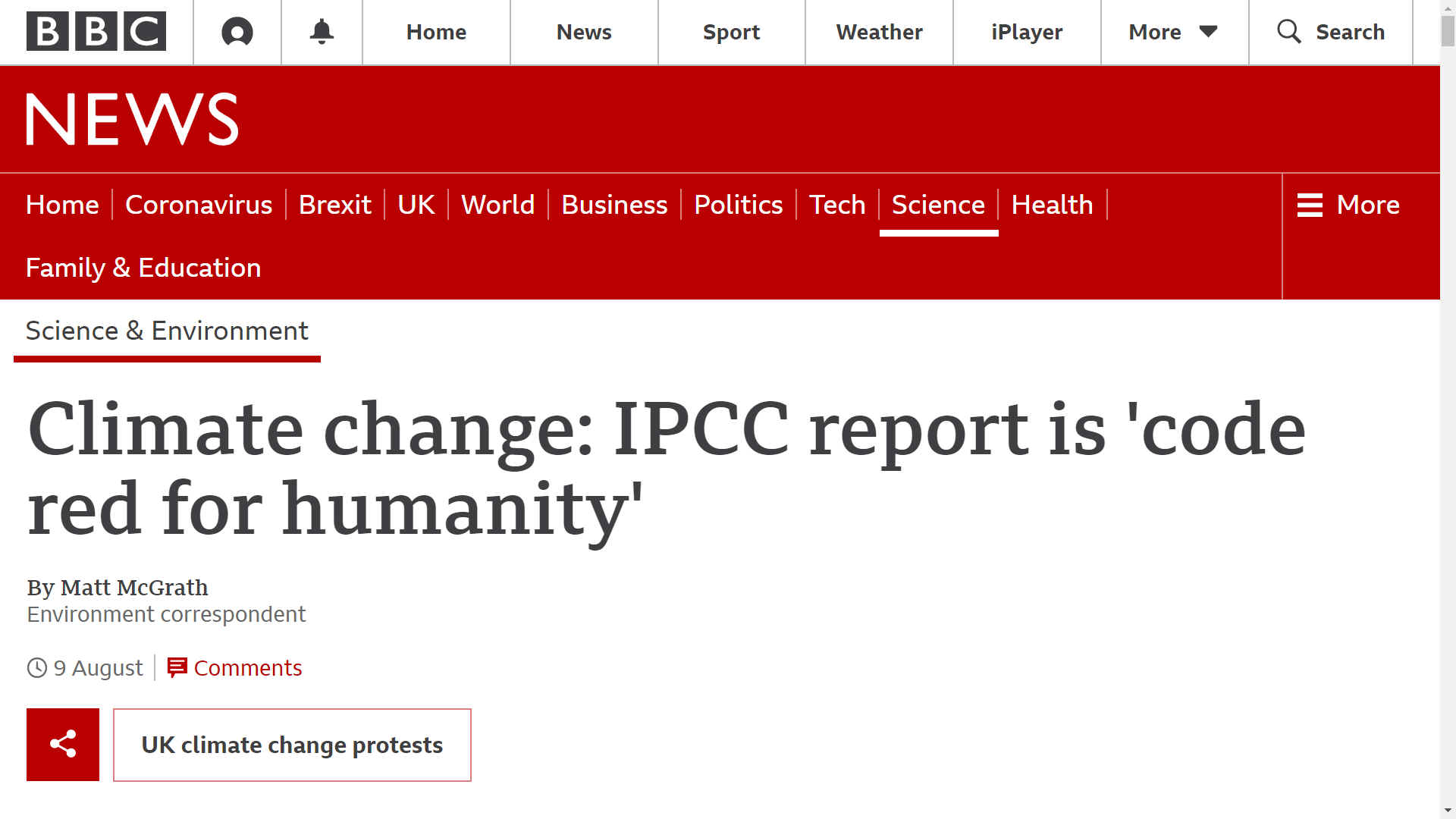
UN'S
IPCC CODE RED -
Although not actually using the above terminology in the
Report, August 2021, it has been interpreted by most people
reading the document as a Code Red for Humanity. Code Red is
equal to DefCon1,
in military terms.
The
IPCC's Report from August 2021, put us at Code Red. The
writing was on the wall in 2018, but world leaders carried on;
business as usual. it looks very much as if in 2024 it will be
the same story. By then we'll be lucky to have any ice in the Arctic. The same for
polar
bears.
As
the food dries up, and becomes more expensive, your savings
will be reduced in value yet again. The good news is that if
we look at the growing population as livestock, we will have a
massive protein store to call on. Apparently, humans taste
like pork and veal. The proof of which was Sweeney Todd's
famous meat
pies in Fleet Street, London. As it is the politicians
that are taking us to the brink, they are the prime
candidates. After all, they got fat on your savings. So why
not give a little back to society. Hannibal
Lecter had a point. Lying to us, makes them "Free
Range Rude," if you fancy having an old friend for
dinner.
ISLAND
NATIONS SINKING UNDER CLIMATE CHANGE FLOOD THREAT - A TO Z
1.
Cabo
Verde, Republic of
2.
Carteret Islands
3.
Fiji, Republic of
4.
Ireland
5.
Hawaii
6. Japan
7.
Kiribati
8.
Maldives
9.
Marshall
Islands, Republic of the
10.
Micronesia,
Federated States of
11.
Palau
12.
Sarichef Island
13.
Seychelles
14. Solomon Islands
15.
Tangier Island
16.
Torres Strait Islands
17.
Tuvalu
18.
United Kingdom
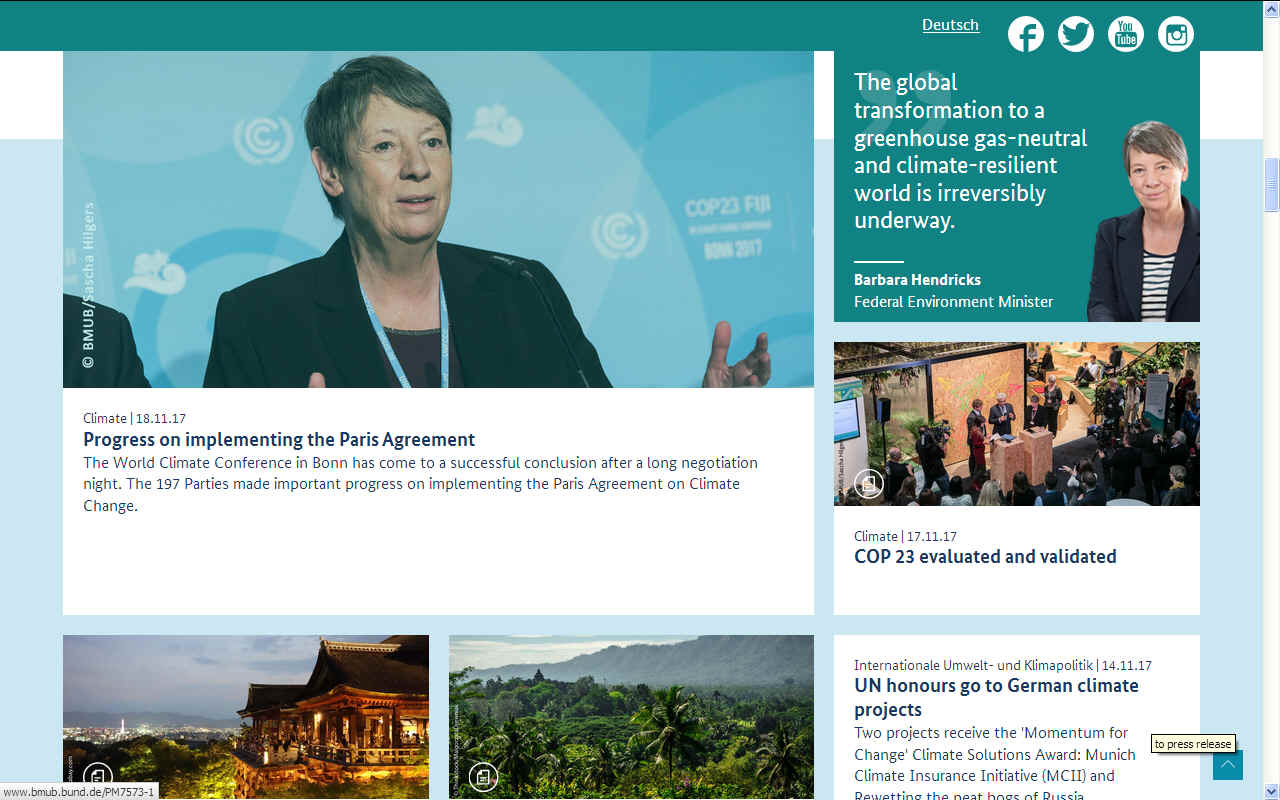
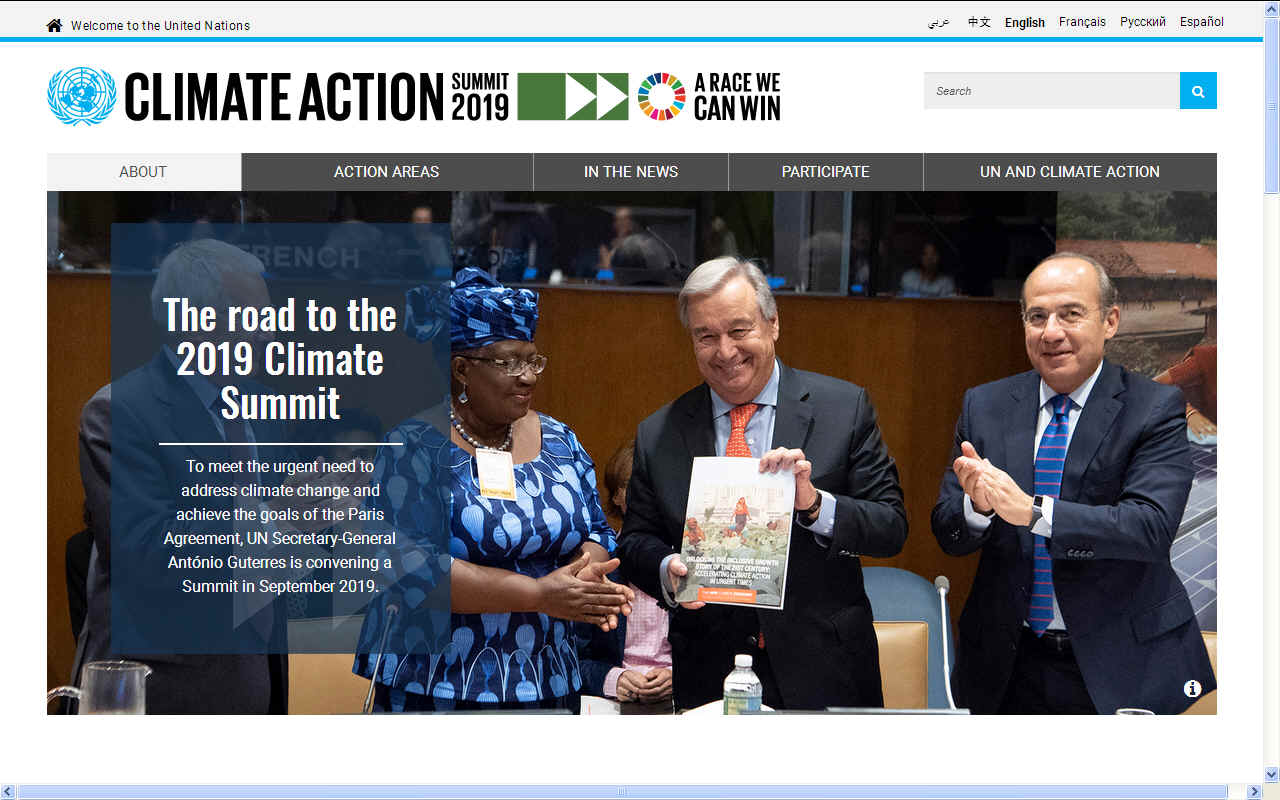
UNITED
NATIONS
PRESS RELEASE 29/11/2018
UN Climate Change News, 29 November 2018 - Heads of 50 major global businesses representing more than $1.5 trillion in total revenue today published an open letter to world government leaders urging greater collaboration to accelerate outcomes in the race against climate change.
The plea for common sense did not work. Policy makers carried
on as before, simply talking about change, but actually doing
very little.
The business leaders call to action comes as government leaders prepare for the UN
Climate Change Conference
COP24 (2-14 December) in
Katowice, Poland, where countries are set to finalize the Paris Agreement implementation guidelines to limit the global average rise in temperature to well below 2 degrees Celsius and as close as possible to 1.5 degrees Celsius.
“If we have twelve years to avoid a ‘hothouse’ earth, we absolutely cannot pursue a business-as-usual approach. Business and government must forge new partnerships that are able to drive results much more quickly than our current international architecture allows,” said Dominic
Waughray, Head of the Centre for Global Public Goods, Member of the Managing Board,
World Economic
Forum.
COP
OUT 26
- GLASGOW - KNOWN AS FLOP 26
Unfortunately,
all the talk in the world and promises to change, are largely
hot air. Especially from the Dirty
Dozen climate criminals, the worlds filthiest nations,
measured by their CO2 and methane output.
They
know that if they make all the right noises, that the UN will
buckle, but in reality the planet is in a Trade War, with China
producing goods using coal
generated electricity.
The same applies to India
and Russia,
and of course the USA,
that is addicted to oil.
With Australia
happy to mine and export coal to other countries, and of
course use a little themselves.
The
world is addicted to cheap imports, made using coal, so
actually fanning the flames of the boilers that are frying the
planet. That is how stupid we are when it comes to a bargain.
Sadly, cheap imports are not cheap at all. They are costing us
the planet. Please don't buy anything from China or India,
made with coal as their industrial driver. China is flooding
the world with fashion clothing at the moment, fooling
customers into believing that is comes from local designer
houses by not telling where it is made in their media based
advertising. It looks good, but when it arrives, it has come
directly from China. We know this because we fell for it and
bought some in error.
Joe
Biden is the only one of the big players willing to raise
taxes to meet climate change targets. Xi Jinping, Vladimir
Putin and Narendra Modi have all cried off, coming to the
table in principle, but actually stepping up coal
burning in a Trade War that is causing global
warming, visible as the disappearing ice
caps and increased deserts.
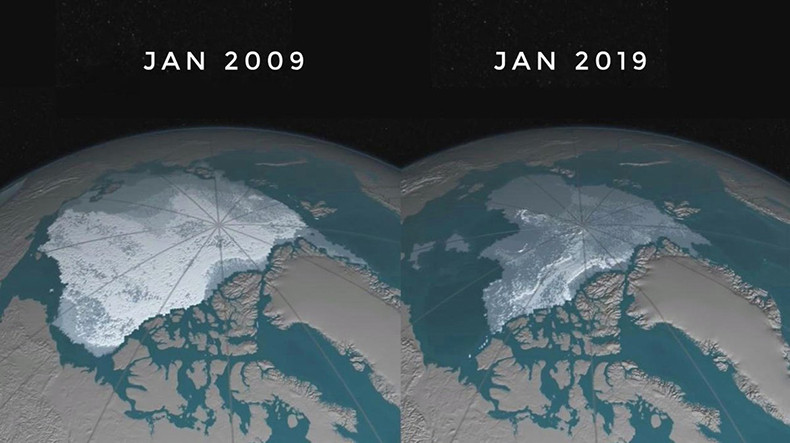
The Alliance of Climate CEOs has also provided input into the UNFCCC Talanoa Dialogue and companies will be looking for a clear signal from COP24 negotiations that governments are willing to strengthen their engagement with the private sector. When they meet in Davos in January 2019, a clear focus will be on setting goals for the UN Secretary General’s Climate Summit in September 2019 to further support the urgent action needed – a watershed moment for getting the planet on track to curb emissions and avoid global temperature rise beyond 1.5oC.
Leaders from the Forum’s Alliance of Climate Action CEOs are committed to using their positions to help meet the
Paris Climate Agreement goals. Thirty of the companies that signed the open letter succeeded in reducing emissions by 9%, (more than 47 million metric tonnes in absolute terms) between 2015 and 2016, the equivalent of taking ten million cars off the road for one year.
Alliance leaders call for greater public-private cooperation to accelerate effective carbon pricing mechanisms and policies to incentivize low-carbon investment and drive demand for
carbon-reduction
solutions. They also highlight the business case for cutting emissions to generate wider support in the private sector.
“Business has an increasingly vital role to play in accelerating the shift to a low-carbon and climate-resilient economy. This will require partnerships with other companies, governments at all levels and civil society. It also requires bold leadership and good governance, which will allow long-term creation of shareholder value alongside long-term value for our society. We, as business leaders, are committed to climate action and stand ready to facilitate fast-track solutions to help world leaders deliver on an enhanced and more ambitious action plan to tackle climate change and meet the goals set out at the 2015 Paris Climate Agreement”, said Feike
Sijbesma, Chief Executive Officer and Chairman of the Managing Board, Royal DSM, and Chair of the Alliance of CEO Climate Leaders.
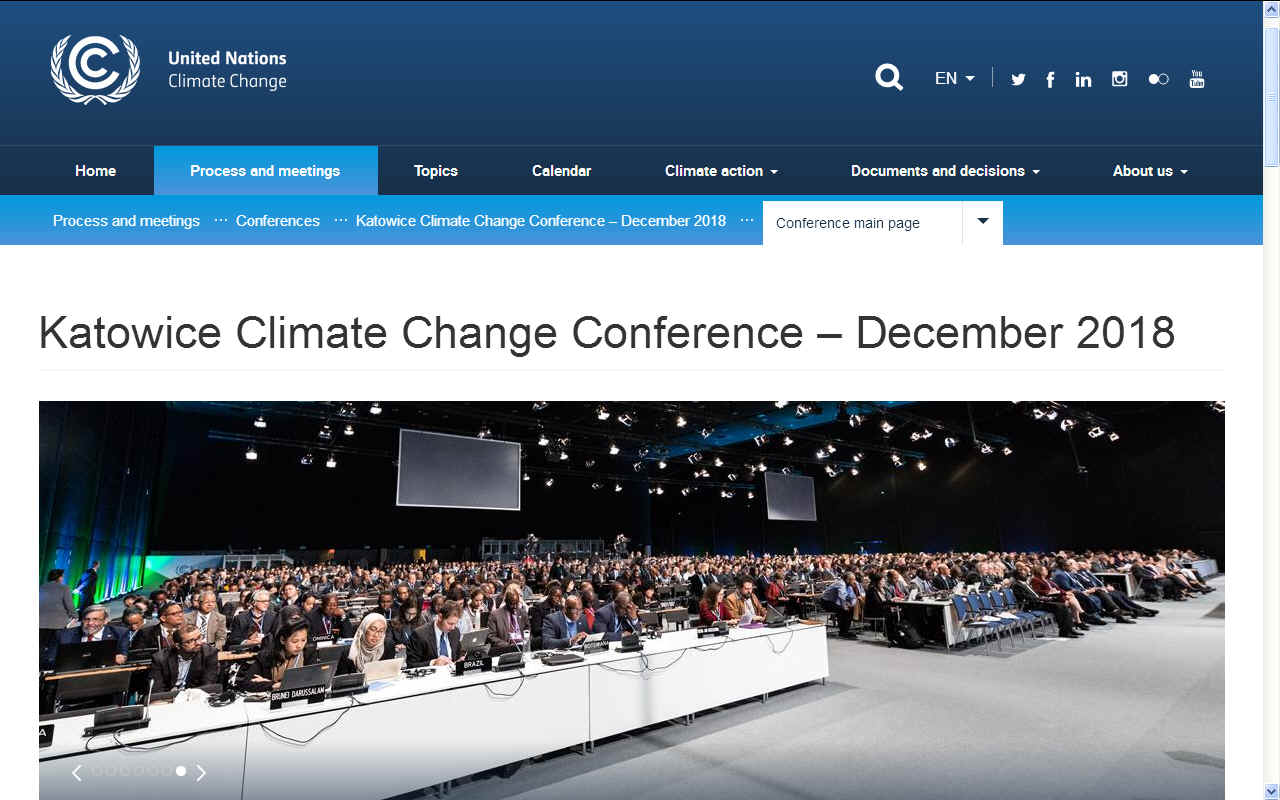
SIX
IMPORTANT CHANGES TO COOL THE PLANET
1.
TRANSPORT:
Phase out polluting vehicles. Government aims to end the sale of new petrol,
and diesel vehicles by
2040 but have no infrastructure
plan to support such ambition. Marine transport can be carbon neutral.
2.
RENEWABLES:
Renewable energy should replace carbon-based fuels (coal,
oil and gas) in our electricity, heating and transport. Conventional energy exploration
companies should consider a phased transition to green alternatives.
3.
HOUSING:
On site micro or macro generation is the best option, starting with
sustainable new homes built of renewable materials that lock
carbon and are affordable. Offering planning rights free to
encourage eco builds and cut out empire building councils that
add significant costs and legal obstacles to hinder progress.
4.
AGRICULTURE:
We need trees to
absorb carbon emissions from a growing population, fossil fueled air travel, and to build new
homes. We need to reduce food waste and promote less energy intensive eating habits
such as no meat Mondays.
5.
INDUSTRY:
Factories should be aiming for solar heating and onsite renewable energy
generation until the grid is all solar and wind powered.
6.
POLITICS:
- National governing bodies need to adopt policies to eliminate
administrative wastages, to include scaling down spending on war machines,
increase spend on educating the public and supporting sustainable social policies that mesh
with other cultures. We need an end to local empire building kleptocrats.
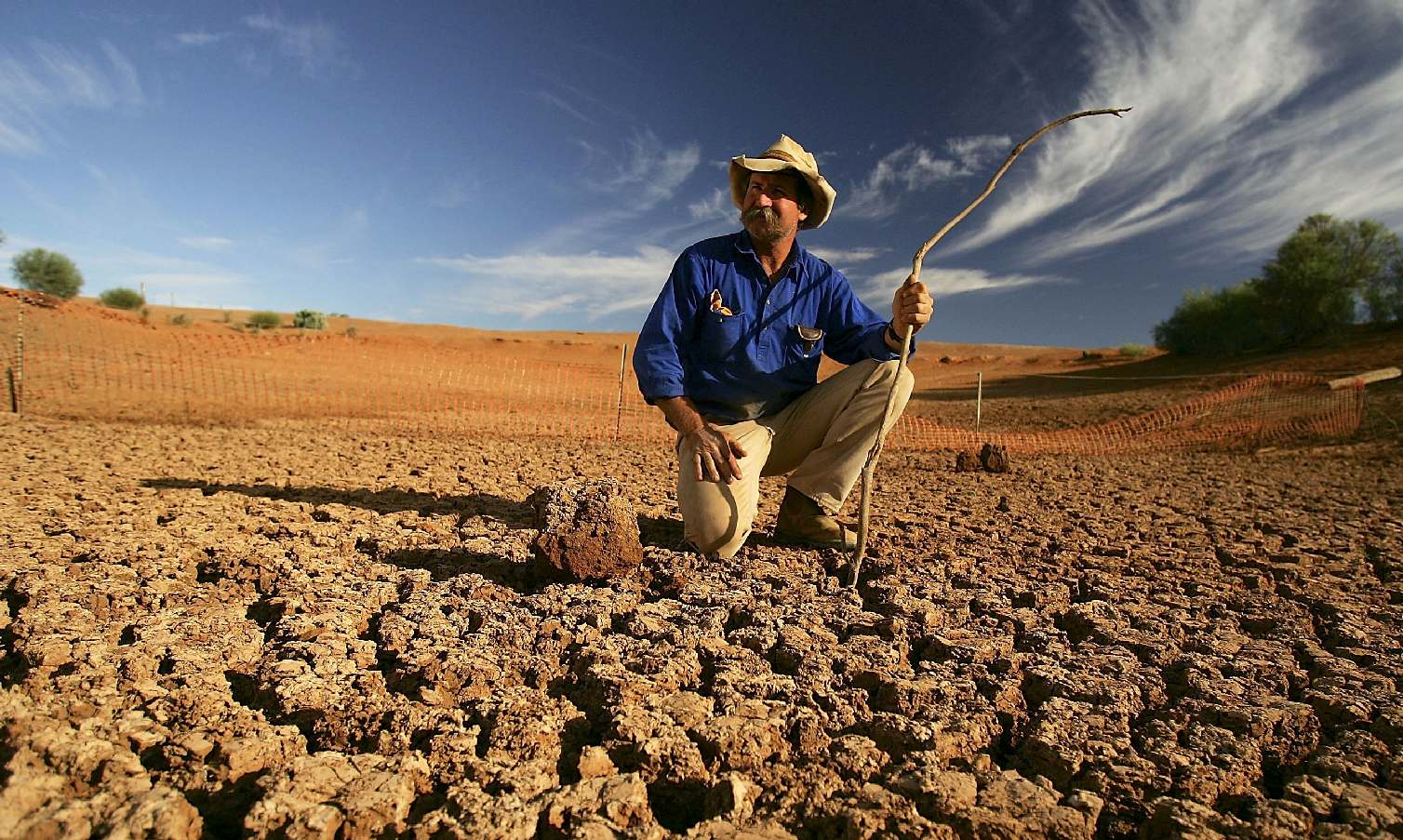
Among measures taken by members of the Alliance to drive climate action within their businesses:
· BT: The UK-based telecom provider is aiming to buy 100% renewable
energy by 2020, and to have reduced carbon intensity by 87% from 2017 levels by 2030. It is also aiming to help customers cut emissions by three times its own total carbon impact by 2030.
· ENGIE: Having cut coal-fired capacity by 60% since 2016 by closing or selling plants, the
France-based energy group has adopted an internal carbon price and is now focusing on low
CO2 energy sources like natural gas and renewables, which will represent over 90% of its earnings by 2018.
· ING Group: By 2025, the banking group will only finance existing utility clients that use coal for 5% or less of their energy mix. New clients will only be financed if they have near-zero reliance on coal. As of November 2017, 60% of all utilities project financing went towards renewables.
· Ørsted: Changed its name in 2017 from Danish Oil and Natural Gas (DONG) Energy to signify its switch from oil and gas to renewable energy. The company has committed to reducing greenhouse gas
(GHG) emission intensity from energy production by 96% by 2023, using a 2006 base-year.
· Royal DSM: The Netherlands-based global business in health, nutrition and sustainable living was established in 1902 as a nationalized
coal mining company. This year it has committed to an absolute GHG emissions reduction of 30% (2016-2030, Scope 1+2), among other by using 75% purchased renewable electricity by 2030. DSM uses an internal carbon price of €50 per ton of CO2e.
· Signify: Formerly Philips Lighting, the company has committed to achieve net-zero carbon buildings by 2030 and to operate a 100% electric and hybrid lease fleet by 2030.
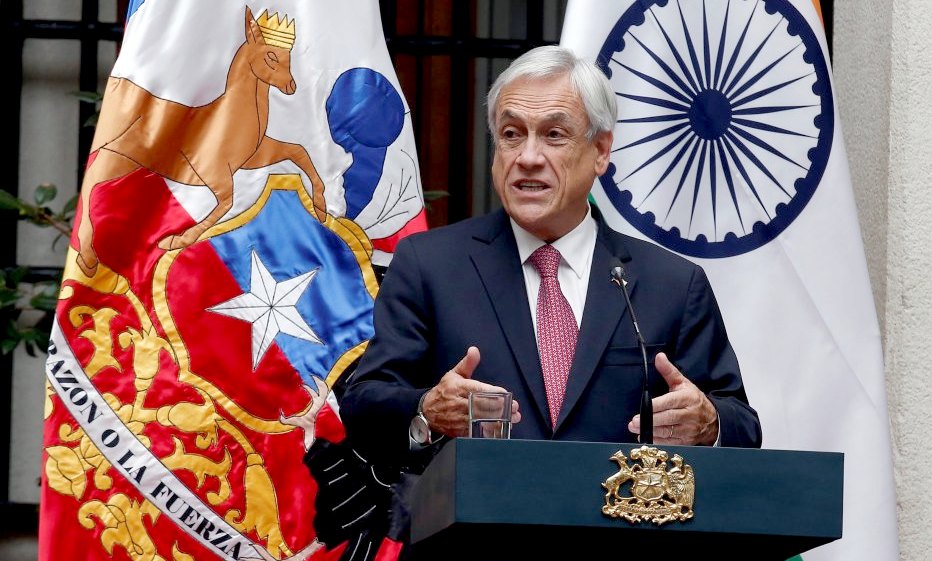
View from the C-Suite
José Manuel Entrecanales Domecq, Chairman and Chief Executive Officer,
Acciona: “The second-best time to act against climate change is now; the best has already passed. It´s the moment to foster emission reduction, effective carbon prices, key partnership and climate risk management.”
Cees 't Hart, President and Chief Executive Officer, Carlsber: “We’re targeting carbon neutrality by 2030 and are excited to work alongside like-minded businesses in our drive to reach the goals of the Paris Agreement, through climate leadership and action.”
John Flint, Chief Executive Officer, HSBC Holdings: “Climate change is a major threat to our environment, societies and economy. Decarbonization of the economy is not straightforward, but it can be achieved by urgent and combined efforts by government, business and policy-makers. HSBC is committed to climate action and has already made significant progress towards our commitment to provide $100 billion of sustainable finance”.
Chen Kangping, Chief Executive Officer, JinkoSolar: “This is the last chance we give to ourselves. Don’t be too late to take action when grid parity is just around the corner.”
Bernard J. Tyson, Chairman and Chief Executive Officer, Kaiser Permanente: "We have a real opportunity to create synergistic public-private partnerships. Working together, we can solve these pressing climate change issues."
Tex Gunning, Chief Executive Officer, LeasePlan: “Climate change is one of the biggest challenges facing every one of us. That’s why we’re committed to working with the entire stakeholder community to speed up the transition to zero emission mobility. Our ambition is to achieve net zero emissions from our entire fleet of 1.8 million vehicles by 2030.”
“Pollution is having dramatic impact on our climate, our landscapes, our flora and fauna, and our health. We need a higher environmental engagement and a shift towards systems that address the negative and positive externalities of products and businesses. Banks should stop financing dirty businesses and shift financial flows towards a low carbon and more circular economy,” said
H.S.H. Prince Max von und zu Liechtenstein, Chief Executive Officer,
LGT.
Henrik Poulsen, Chief Executive Officer, Ørsted: ”Green energy is now fully competitive with fossil energy. There is no economic reason for not accelerating the transition to green energy.”
Eric Rondolat, Chief Executive Officer, Signify: “Today’s weather anomalies are the result of a temperature rise of only 1 degree Celsius. Imagine the impact on our daily lives when temperature rises 2 degrees or more. We - both political and business leaders - need to act now and accelerate targeted integrated policy interventions that stimulate sustainable business and safeguard a healthy planet for future generations. The good news is that we can still limit global warming with the latest available technologies, so let’s step up climate action now for the benefit of all”.
Christian Mumenthaler, Group Chief Executive Officer, Swiss Reinsurance Company Ltd.: "Climate change is impacting our societies and will cause irreversible damage if we don't act. With our partners we need to make societies more resilient and build a low-carbon future".
J. Erik Fyrwald, Chief Executive Officer and Executive Director of Syngenta International: “Climate change poses severe threats to
food
security, rural communities and economies. As one of the world’s leading agricultural companies we are investing more than US$1 billion every year to achieve a coherent approach to meet that challenge.”
According to a 2013 report, temperatures in
the shallowest waters of our oceans rose by more than 0.1 degree Celsius (0.18 degree Fahrenheit) each decade between 1970 and 2010.
These
are just six ways that warmer temperatures are affecting our
oceans:-
1. Coral bleaching
As early as 1990, coral reef expert Tom Goreau and I pointed out that mass coral bleaching events observed during the 1980’s were probably due to anomalously warm temperatures related to
climate
change.
Mass coral bleaching results in the starvation, shrinkage and death of the corals that support the thousands of species that live on
coral reefs.
2. Fish migration
In addition, many fish species have moved toward the poles in response to ocean warming, disrupting fisheries around the world.
3.
Fish shrinkage
A new study (21-8-17) by researchers at the University of British Columbia explains that fish are cold blooded and cannot regulate their own body temperatures. Thus,
when their waters get warmer, their metabolism accelerates and more
oxygen is needed to sustain body functions.
For this reason fish could shrink in size by 20 to 30 per cent if ocean temperatures rise by just 2°C (3.6°F) -
about what is expected to occur around the world by the mid-21st century.
4. Drowning wetlands
Rising sea levels, partly the result of heat absorbed by the ocean, is also “drowning” wetlands. Wetlands normally grow vertically fast enough to keep up with sea level rise, but recently the sea has been rising too fast for wetlands to keep their blades above
water.
Coral reefs and sea grass meadows are also in danger of “drowning” since they can only photosynthesize in relatively shallow water.
5. Ocean acidification
The ocean has absorbed about 30 percent of the carbon dioxide humans have sent into the atmosphere since the start of the Industrial Revolution – some 150 billion tons.
However, this great service, which has substantially slowed global warming, has been accomplished at great cost: The trend in ocean acidification is about 30 times greater than natural variation, and average surface ocean pH, the standard measure of acidity, has dropped by 0.1 unit - a highly significant increase in
acidity.
This is damaging many ocean species that use calcium carbonate to form their skeletons and shells. Studies have shown that calcium carbonate formation is disrupted if water becomes too acidic.
Ocean acidification also appears to be affecting whole ecosystems, such as coral reefs, which depend on the formation of calcium carbonate to build reef structure, which in turn provides homes for reef organisms.
6. A disastrous positive feedback loop
Finally, acidification also appears to be reducing the amount of sulfur flowing out of the ocean into the atmosphere. This reduces reflection of solar radiation back into space, resulting in even more warming.
This is the kind of positive feedback loop that could result in run-away climate change – and of course, even more disastrous effects on the ocean.

SCIENCE
DAILY JUNE 28 2017 - TURNING THE CLIMATE TIDE BY 2020
The climate math is brutally clear
"The climate math is brutally clear: While the world can't be healed within the next few years, it may be fatally wounded by negligence until 2020," concludes Hans Joachim Schellnhuber from the Potsdam Institute for Climate Impact Research, co-author of both the Nature comment and the Science article. Action by 2020 is necessary, but clearly not sufficient
- it needs to set the course for halving CO2 emissions every other decade. In analogy to the legendary Moore's Law, which states that computer processors double in power about every two years, the 'carbon law' can become a self-fulfilling prophecy mobilizing innovations and market forces, says Schellnhuber. "This will be unstoppable
- yet only if we propel the world into action now."
The opportunity given to us over the next three years is unique in history
"We stand at the doorway of being able to bend the GHG emissions curve downwards by 2020, as science demands, in protection of the UN Sustainable Development Goals, and in particular the eradication of extreme poverty," Christiana Figueres says, lead-author of the Nature comment and former head of the United Nations Framework Convention on Climate Change (UNFCCC). "This monumental challenge coincides with an unprecedented openness to self-challenge on the part of sub-national governments inside the
US, governments at all levels outside the US, and of the private sector in general. The opportunity given to us over the next three years is unique in history." Figueres is the convener of Mission 2020, a broad-based campaign calling for urgent action now to make sure that carbon emissions begin an inexorable fall by 2020.
The authors and co-signatories to the Nature article comprise over 60 scientists, business and policy leaders, economists, analysts and influencers, including Gail Whiteman from Lancaster University; Sharan Burrow, General Secretary of the International Trade Union Confederation; Paul Polman, Chief Executive Officer of Unilever plc; Anthony Hobley, Chief Executive of Carbon Tracker; Christian Rynning-Tønnesen, CEO of Statkraft; and Jonathan Bamber, President of the European Geosciences Union.

THE
ECONOMIC TIMES 26 JUNE 2017
When people think of climate change, pictures of melting glaciers, sweltering heat in summers and flooding of coastal areas predominate. Often lost in the imagery is the role the world's oceans play in countering the worst effects of global warming.
Although oceans and seas cover more than two-thirds of the earth's surface, they are taken for granted most of the time. People and governments forget that they are rich in resources and provide us with
food, energy and minerals. It is a truism to say that since the high seas belong to no nation, they are the most exploited by everyone.
It is thus important to remember that oceans are crucial for the stability of the planetary climate and local weather. But due to
overfishing, loss of biodiversity and ocean pollution, the future of this unique ecosystem faces a grave threat today.
It is well known that global warming is mainly caused by the carbon dioxide released into the atmosphere by burning fossil fuels like coal and oil. Since
industrialization in the 19th century, the amount of this greenhouse gas in the atmosphere has risen by as much as 40%.
If not for the oceans, temperatures would be even higher than they are now because they absorb a quarter of the carbon dioxide released into the air. When the concentration of carbon dioxide in the atmosphere rises, oceans absorb more to restore the balance. The colder the seawater is, the more effectively the process works.
It is in this context that mapping of the oceans on various parameters that affect human life assumes importance. To illustrate the important role played by the ocean and its ecosystems, Germany's Heinrich Böll Foundation has recently released the latest in a series of global environmental reference works called the Ocean Atlas: Facts and Figures on the Threats to Our Marine Ecosystems 2017.
The atlas aims to give a current insight of the state of the seas and the threats to them. "We hope to stimulate a broader social and political discussion about the meaning of the ocean as an important system and the possibilities for protecting it," the foundation said while launching the atlas.
The atlas clearly explains the role oceans play in battling climate
change. In the Labrador Sea and Greenland Sea as well as in regions near the
Antarctic coast, large quantities of surface water sink into the deep sea where carbon dioxide is stored for a long time. The lion's share of the stored greenhouse gas since the start of the Industrial Revolution will take centuries to return to the surface of the
ocean again. Part of it will remain fixed in the sediment of the sea floor. That is how the ocean significantly slows down climate change.
However, the ability of the oceans to sequester carbon dioxide is not unlimited. For example, while carbon dioxide absorption in the Southern Ocean declined between 1980 and 2000, it has increased in the years since, according to the atlas. The ocean does more than absorb a considerable amount of the greenhouse gas. It also soaks up nearly all the additional warmth resulting from the manmade greenhouse effect.
According to the atlas, oceans have absorbed an astounding 93% of the excess heat over the past 40 years. Increased atmospheric temperatures are attributable to just 3% of this additional thermal energy and would be much greater if not for the oceans. The extra warmth is essentially hidden in the ocean, where it slowly spreads through the depths. Because of this, the surface temperature only increases at a snail's pace.
All of this comes at a price. Absorbing excess carbon dioxide leads to a progressive acidification of the ocean water, while absorbing excess heat contributes to rising sea levels and troubling changes in marine ecosystems. The warming of the oceans also contains dangerous feedback loops. When the rate of evaporation on the ocean surface increases, it produces more water vapor -- a potent greenhouse gas -- which in turn causes temperatures to rise, which causes the rate of evaporation to increase.
These feedback loops can accelerate global warming in ways that are difficult to predict, one more reason not to further burden the ocean system, the atlas warns. For this reason, meeting the goal of limiting
global warming to two degrees agreed upon at the
Paris Climate Conference is essential.
COP
HISTORY
|
1995
COP 1, BERLIN, GERMANY
1996
COP 2, GENEVA, SWITZERLAND
1997
COP 3, KYOTO, JAPAN
1998
COP 4, BUENOS AIRES, ARGENTINA
1999
COP 5, BONN, GERMANY
2000:COP
6, THE HAGUE, NETHERLANDS
2001
COP 7, MARRAKECH, MOROCCO
2002
COP 8, NEW DELHI, INDIA
2003
COP 9, MILAN, ITALY
2004
COP 10, BUENOS AIRES, ARGENTINA
2005
COP 11/CMP 1, MONTREAL, CANADA
2006
COP 12/CMP 2, NAIROBI, KENYA
2007
COP 13/CMP 3, BALI, INDONESIA |
2008
COP 14/CMP 4, POZNAN, POLAND
2009
COP 15/CMP 5, COPENHAGEN, DENMARK
2010
COP 16/CMP 6, CANCUN, MEXICO
2011
COP 17/CMP 7, DURBAN, SOUTH AFRICA
2012
COP 18/CMP 8, DOHA, QATAR
2013
COP 19/CMP 9, WARSAW, POLAND
2014
COP 20/CMP 10, LIMA, PERU
2015
COP 21/CMP 11, Paris, France
2016
COP 22/CMP 12/CMA 1, Marrakech, Morocco
2017
COP 23/CMP 13/CMA 2, Bonn, Germany
2018
COP 24/CMP 14, Katowice, Poland
2019
COP 25/CMP 15/ Santiago, Chile (venue moved)
2019
COP25/CMP 15, Madrid, Spain
2020
COP 26/CMP 16/CMA
3, Italy
& UK bids |
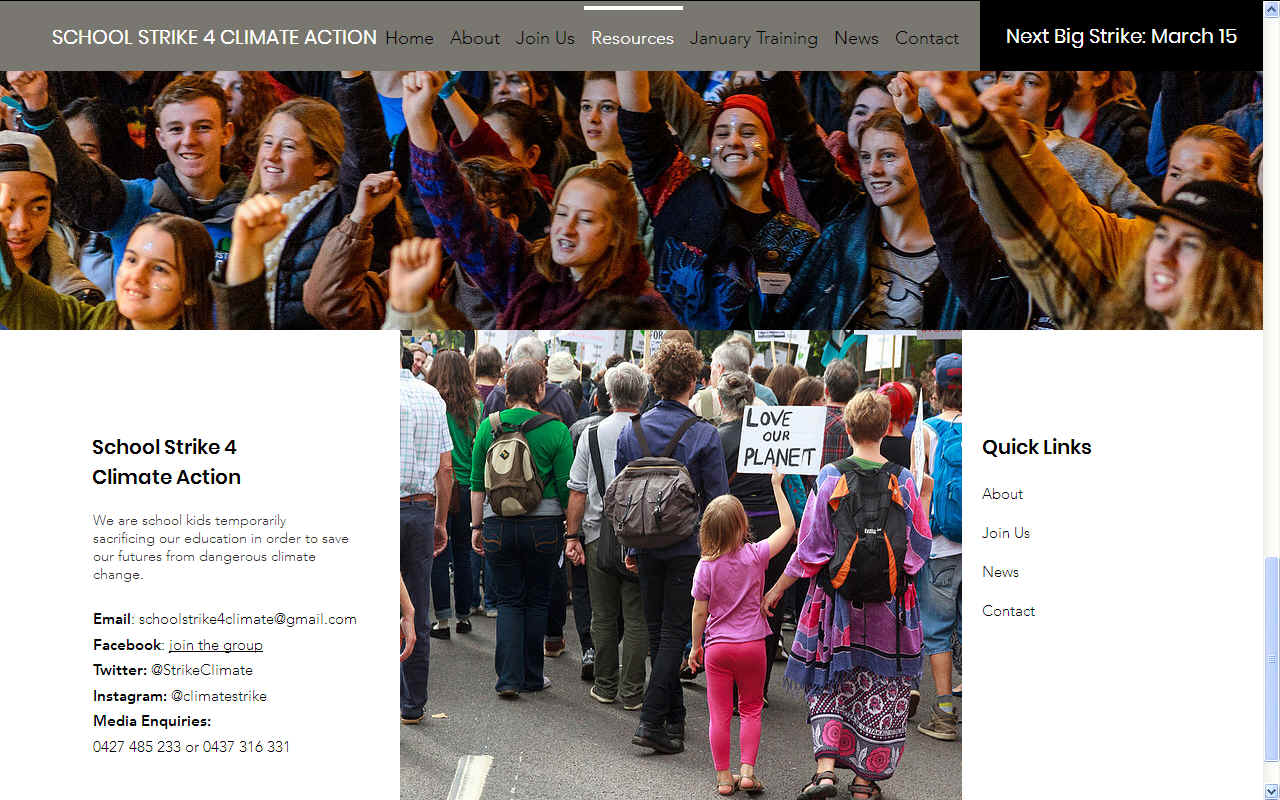
MARCH
2019 CALL TO ARMS - They are school kids temporarily
sacrificing their
education
in order to save our futures from
dangerous climate
change. What stars. On November 30, over 15,000 boys and
girls went on strike from
school
in every capital city and over 20 regional centres across Australia. On
March 15, they are going even bigger and inviting adults to
join them in solidarity for a Global Climate Strike. We're in!
1995
COP 1, BERLIN, GERMANY
1996
COP 2, GENEVA, SWITZERLAND
1997
COP 3, KYOTO, JAPAN
1998
COP 4, BUENOS AIRES, ARGENTINA
1999
COP 5, BONN, GERMANY
2000:COP
6, THE HAGUE, NETHERLANDS
2001
COP 7, MARRAKECH, MOROCCO
2002
COP 8, NEW DELHI, INDIA
2003
COP 9, MILAN, ITALY
2004
COP 10, BUENOS AIRES, ARGENTINA
2005
COP 11/CMP 1, MONTREAL, CANADA
2006
COP 12/CMP 2, NAIROBI, KENYA
2007
COP 13/CMP 3, BALI, INDONESIA
2008
COP 14/CMP 4, POZNAN, POLAND
2009
COP 15/CMP 5, COPENHAGEN, DENMARK
2010
COP 16/CMP 6, CANCUN, MEXICO
2011
COP 17/CMP 7, DURBAN, SOUTH AFRICA
2012
COP 18/CMP 8, DOHA, QATAR
2013
COP 19/CMP 9, WARSAW, POLAND
2014
COP 20/CMP 10, LIMA, PERU
2015
COP 21/CMP 11, Paris, France
2016
COP 22/CMP 12/CMA 1, Marrakech, Morocco
2017
COP 23/CMP 13/CMA 2, Bonn, Germany
2018
COP 24/CMP 14/CMA 3, Katowice, Poland
2019
COP 25/CMP 15/CMA 4, Santiago, Chile
2020
COP 26/CMP 16/CMA 5, Glasgow, Scotland
2021
COP 26/ Glasgow, Scotland 1-12 November
2022
COP 27/ TBA
LINKS
& REFERENCE
https://www.un.org/en/climatechange/events.shtml
Please use our A-Z
INDEX to navigate this
site or go HOME
EARTH | GROWTH |
HYDROGEN |
ELECTRICITY
| OCEANS
|











